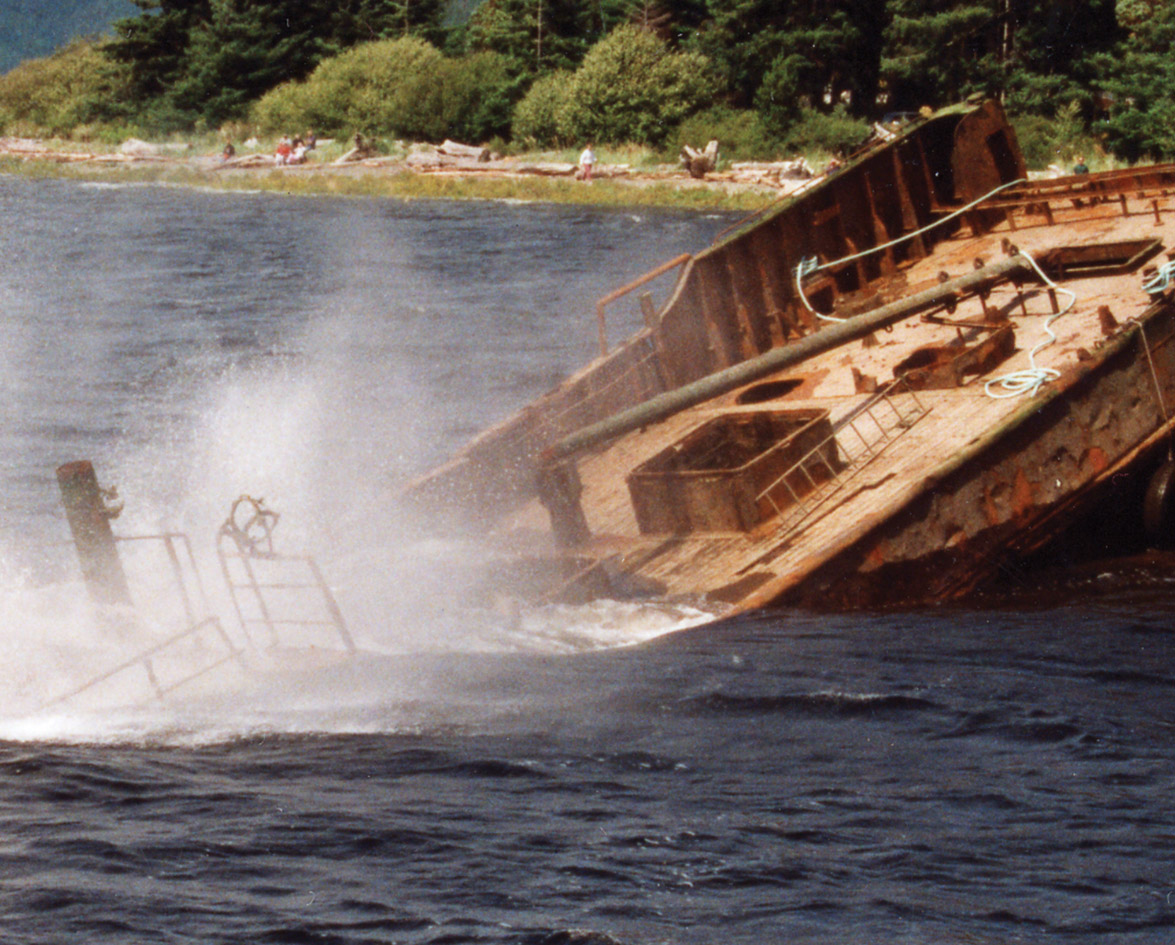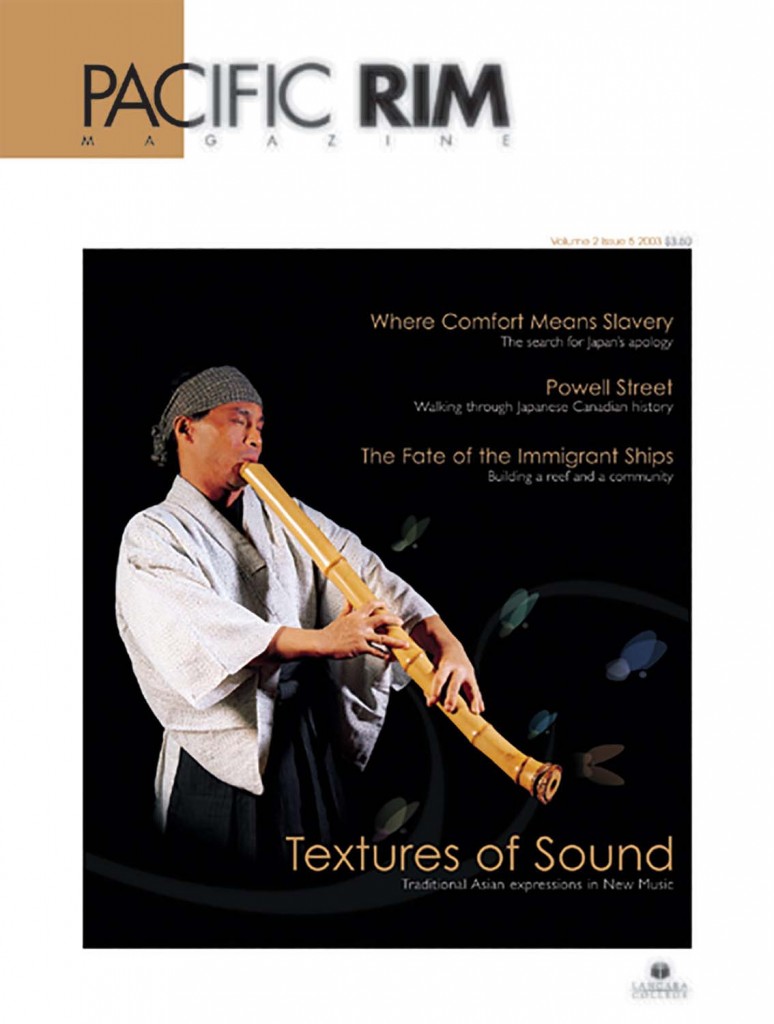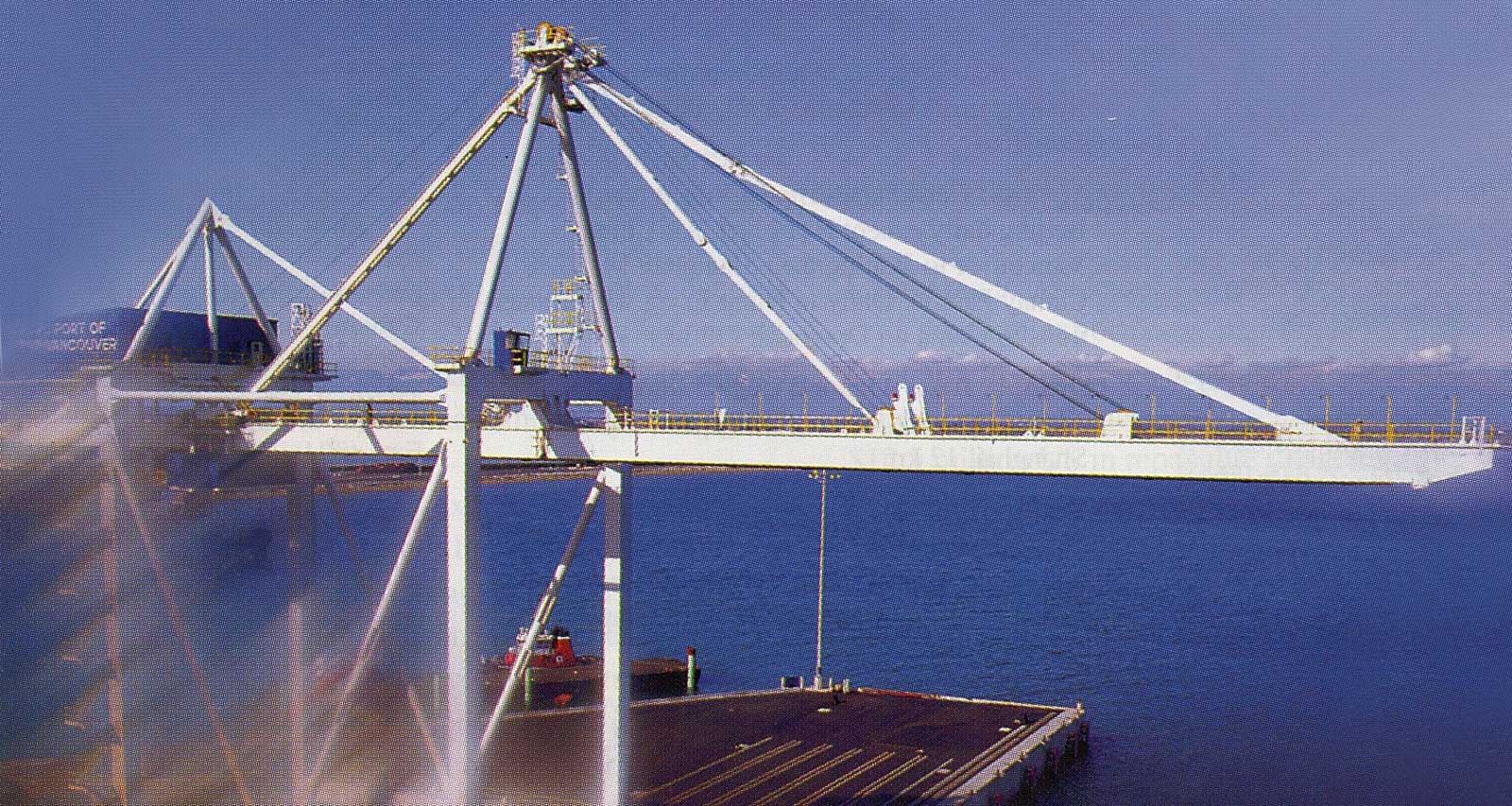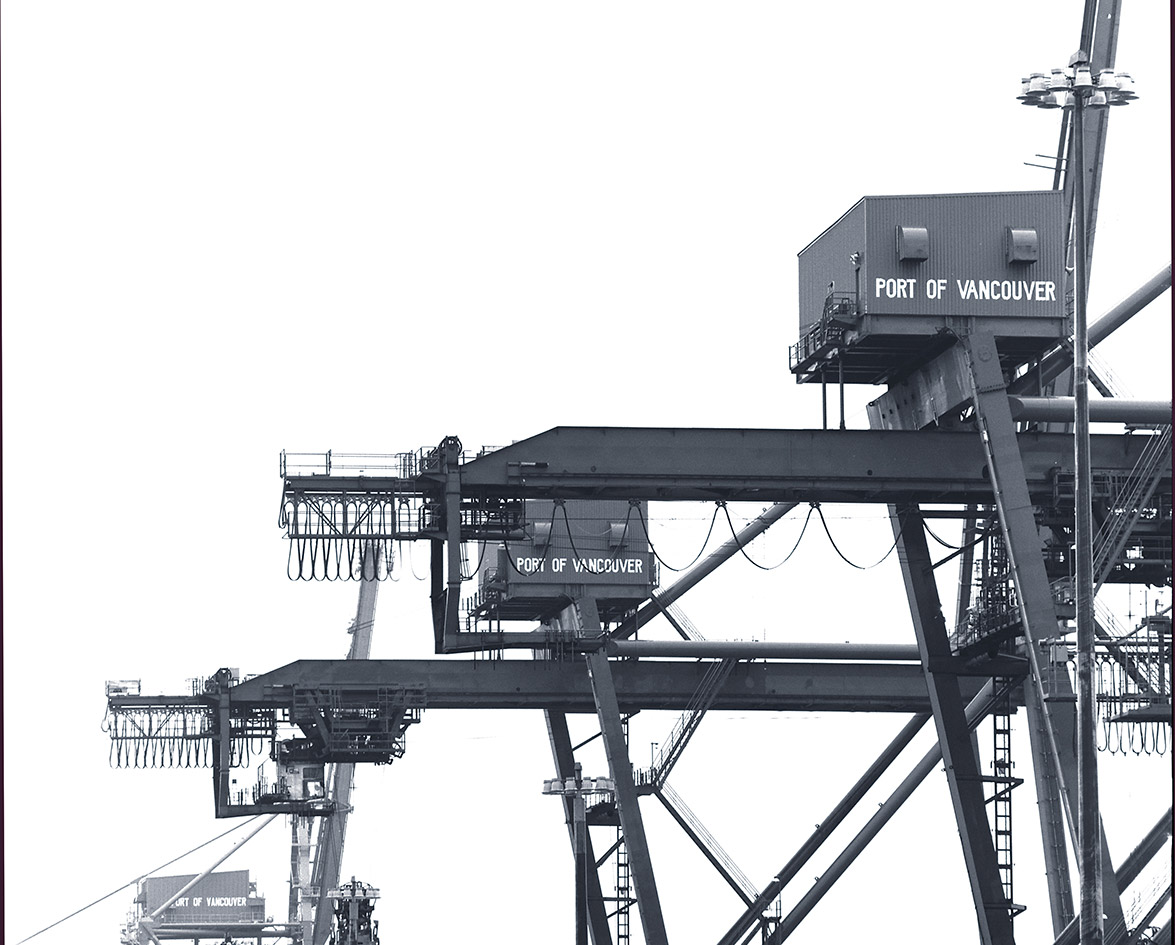The rusted hulls miserably creaked together, lending voice to the ghostly ships as they drifted towards the end of their journey. A few broken shards of glass hung where windows once had been. Covered with rust, the boats’ colour was difficult to discern. Two of them listed sideways while another had holes rusted right through the rails. Frayed and grimy ropes snaked haphazardly across the decks as doors pulled crookedly at hinges.
These infamous vessels—so horrific in appearance they made onlookers gasp—brought 599 desperate Chinese immigrants to Canada in search of a new life in 1999. Since then, a large number of the immigrants have been sent home, and the ships have been seized, but not forgotten.
Never claimed by their Chinese owners, the boats became the property of the Federal Crown Assets Department and languished in place until Brooke George, president of the Port Alberni Reef Society, made a proposal to the Canadian government to purchase the ships. George said it was an invaluable opportunity to preserve something that had played such an important role in the lives of some of Canada’s newest immigrants. The federal government agreed to sell George the vessels—but only as a package—so he bought all four derelict boats for $1,000 CAD.
Giving A New Purpose To The Vessels
Three of the four ships were slated to be sunk as artificial reefs, while the fourth, a Korean fishing vessel, was in good enough condition to keep afloat. The diving community in Port Alberni was excited about this new project, unaware of how involved it would become in the complex project. Before any of the ships could be sunk, they had to meet Environment Canada’s cleaning regulations, which, according to Paul Blake, director of the sinking preparation, “are the most stringent regulations in the world to build an artificial reef.” The federal government spent $100,000 on decontamination, including the removal of 55 tons of garbage, feces, and vomit, and blasted these ships with chemical steam to eliminate biological contaminants. After this process, George had the ships towed into Port Alberni, where they were destined to change many more people’s lives.
When the ships arrived in the quiet logging town, they still required thousands of hours of work. Fortunately, several volunteers were more than willing to help. Members of the Alberni Reef Society and many local divers led the way, spending innumerable hours doing the hard physical labour. The Dragonfly Youth Team also offered their time and were helped by other volunteers and people who fulfilled their community service requirements by working on the boats.
Volunteers had to remove all hydrocarbons, fuel, oil, grease, and soot, as well as any wood or wires from the ships. The ships were then gutted, meaning the engine, ballast and piping were removed, and excess fuel was sold to the local McLean’s Mill Steam Train.
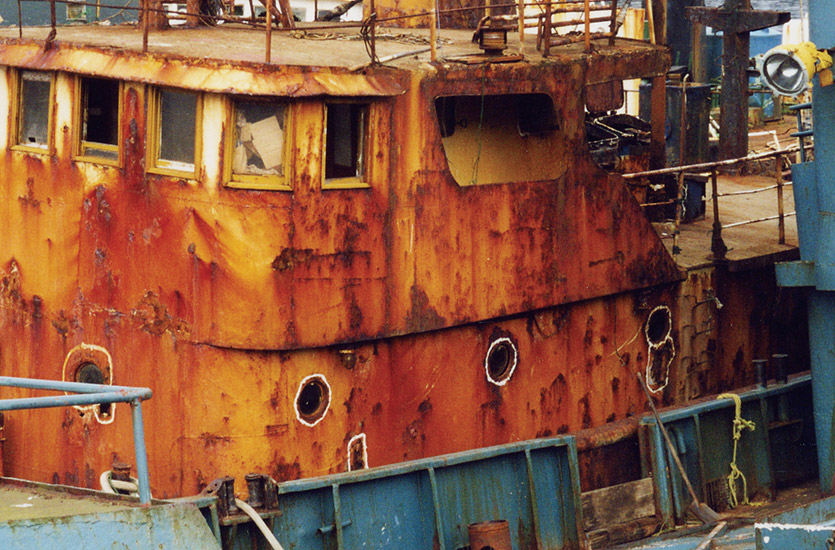
Diver’s Became Devoted To The Project
Brooke George and fellow Reef Society member Sven Juthens, a local diver, were so devoted to the project they each spent $5,000 of their own money to help fix up the ships. In addition, the Federal Government provided $75,000 in funding for this unique project, and the National Sportsman Fund donated another $10,000.
Locals came daily to watch the progress or to get a second look at the haunting boats. Word about the project got out, and divers from all over Vancouver Island came to observe. People were even interested in venturing onto the ships. Eager to comply, the Reef Society conducted tours of the ships by donation. Although the tours were quite disturbing to some people, for many, understanding the past of the ships was important. Shane Morrow commented, “People came off crying, just like they’d been to a concentration camp.” Steve Cyr, a local diver, agreed that knowing the ships were used to carry immigrants across the ocean will make diving to them a more meaningful experience.
These infamous vessels-so horrific in appearance they made onlookers gasp- brought 599 desperate Chinese immigrants to Canada in search of a new life.
After being moored in Port Alberni’s Harbour Quay for just over a year, the boats were finally ready to be sunk. Preparations were made to sink two of the boats in Underwood Cove, just off China Creek Marina in Port Alberni, and the third at Seachart in Barclay Sound.
Sinking The Boats
Sinking the boats was a complex process, with the frailty of the boats being a major concern. In fact, the rustiest boat was in such poor condition that, according to Shane Morrow, “you probably could have put your fist through the hull bottom.” Morrow proved to be correct, as the whole front of the bow caved in when the crew attempted to tow the ship. They eventually managed to tow two ships to the designated location of Underwood Cove, where they tried mooring them with two 1,800 kilogram blocks per ship. This was not enough for one of the boats, which began to sink too fast and was “lost at sea” more than 90 metres offshore. The sinking of the second boat was more successful, and that boat is now the only artificial reef in North America that can be reached from land. The third boat, sunk in Seachart a little later, is a shallow reef and easily accessed from a nearby vacation lodge.
During their time above water, the ships provided insight into the plight of the Chinese refugees while unifying an entire community, who were proud to be involved with such an important part of Canadian history. Now on the ocean floor, they serve as permanent markers of the immigrants’ desperate journey, continuing to interest and educate tourists and locals alike. The boats will always represent an important part of British Columbia and Canada’s history. Thanks to the residents of Port Alberni, and seemingly guided by fate, the ships have found their final resting place.





